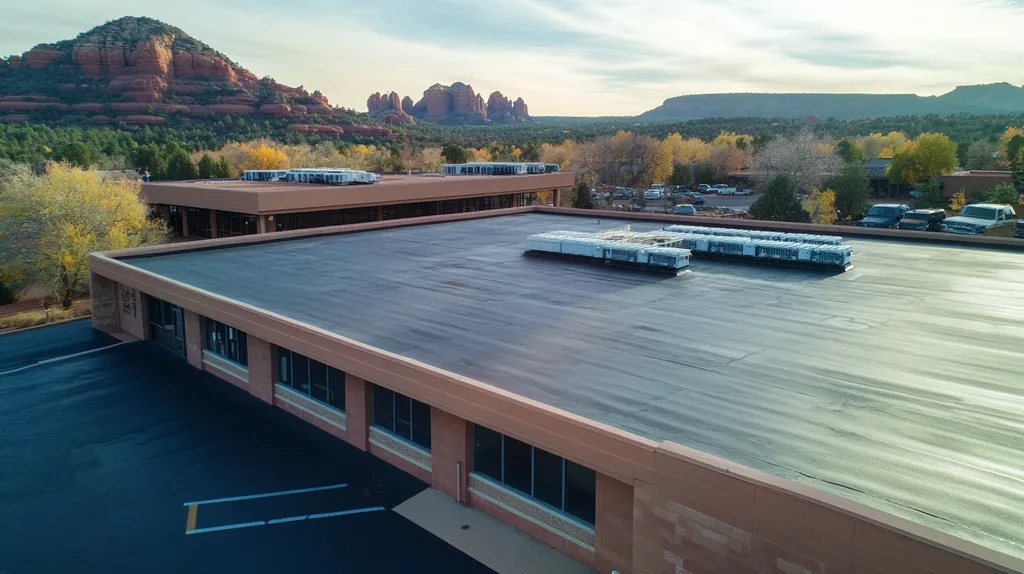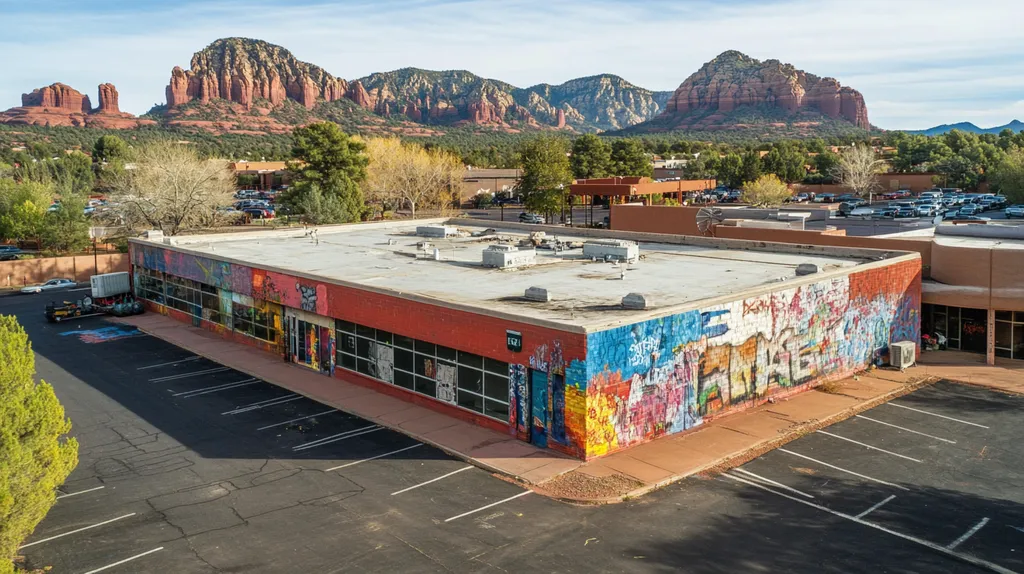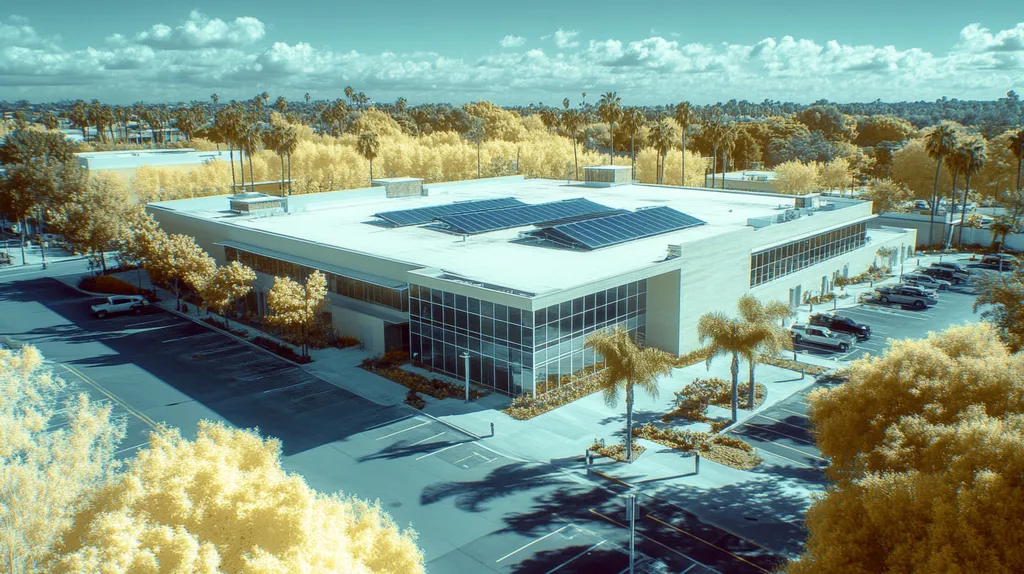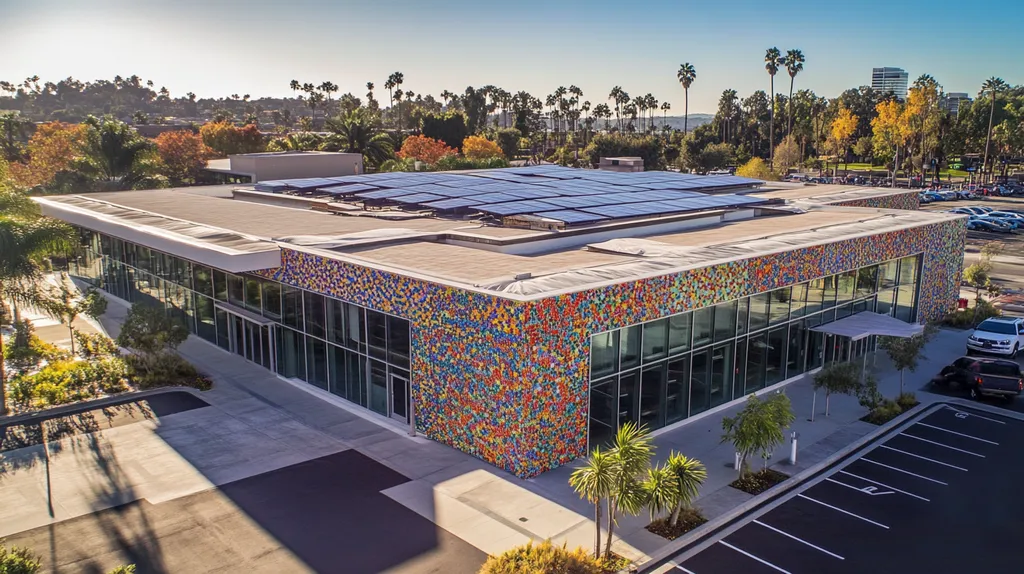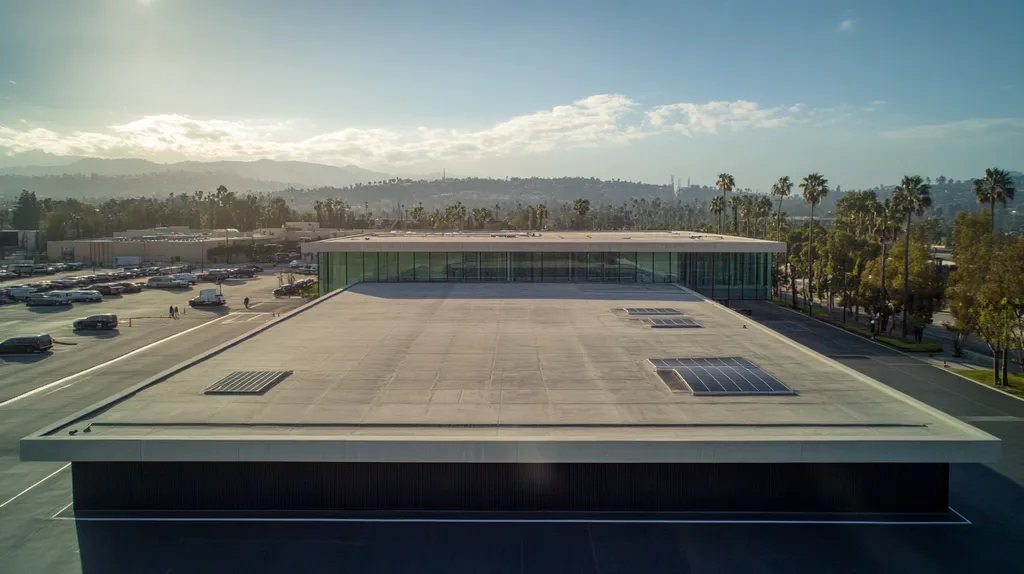Commercial roofing failures cost property owners over $2.5 billion annually, with poorly installed sealants contributing to 40% of these expenses. Despite technological advances, many facilities continue to rely on outdated installation practices that compromise roof integrity and accelerate deterioration.
Current research indicates that implementing proper sealant protocols could extend roof lifespans by up to 15 years while reducing maintenance costs by 30%. However, systemic issues in application methods, material selection, and maintenance schedules continue to undermine these potential benefits.
This analysis examines critical flaws in established sealant practices and presents evidence-based solutions for enhancing commercial roof performance through improved installation methods.
SECTION 1: CURRENT PRACTICES
The role of sealants in commercial roof coating installations is critical, as their effectiveness greatly influences both the lifespan and performance of roofing systems. Research indicates that properly sealed roofs can last up to 20 years longer than those without adequate protection. Therefore, property owners must focus on enhancing application techniques and maintenance practices. Unfortunately, many existing methods for installation, sealant selection, and maintenance schedules exhibit significant gaps that could compromise the integrity of roofing systems. This section will explore common practices that require reevaluation and emphasize vital areas for improvement.
Common Application Methods
Most commercial roofing projects still rely on traditional application methods, primarily using brushes or rollers. While these approaches are familiar, they often fail to deliver the consistent coverage necessary for effective protection. Problems like streaking, dripping, and missed areas frequently arise, resulting in vulnerabilities within the roofing system.
Environmental factors during application can also play a significant role in sealant performance. For instance, applying sealants at temperatures outside the manufacturer’s recommended range can lead to inadequate adhesion, creating weak points that heighten the risk of water infiltration.
Despite the potential for improvement, many contractors tend to stick with established practices rather than consider advanced application techniques. Innovations such as spray-applied sealants or robotic applicators remain underutilized, leading to variations in application quality. By adopting these modern techniques, the industry could reduce future maintenance needs and boost overall roof performance.
As the commercial roofing landscape evolves, it becomes increasingly essential for contractors to invest in training and up-to-date equipment. Prioritizing effective application methods can significantly elevate the durability of roofing systems, benefiting property owners in the long term.
Standard Sealant Selection Criteria
The selection of sealants is a crucial step that can determine the success of any roof installation. Currently, many property owners make choices based on basic criteria like cost and availability. Although these factors matter, they often overshadow more critical elements such as UV resistance, elasticity, and chemical compatibility.
For example, opting for a less expensive sealant may lead to short-term savings but costly long-term repercussions. Cheaper sealants often degrade more rapidly under intense sun or extreme temperature fluctuations, necessitating more frequent repairs or complete replacements.
Moreover, specific conditions unique to each roofing system should guide sealant selection. Properties situated in humid climates or areas prone to severe weather require specialized sealants capable of enduring these challenging environments. Neglecting these considerations can trigger sealant failures, inflating operational costs over time.
To foster improved outcomes, contractors and property owners must engage in thorough evaluations that extend beyond mere pricing. By adopting more detailed sealant selection criteria, they can enhance the durability and efficiency of their roofing investments.
Typical Maintenance Schedules
Regular maintenance is essential for maximizing the lifespan of sealants and, by extension, commercial roofing systems. However, many facilities managers follow generic maintenance schedules that do not take into account the unique conditions of each roof. These standardized approaches can result in missed inspections and unnoticed issues.
For instance, roofs in urban areas exposed to higher pollution levels may require more frequent inspections and maintenance compared to those situated in rural locales. Neglecting such environmental factors can lead to unaddressed damage, establishing a chain reaction that results in expensive repairs.
Timing is also crucial when it comes to maintenance checks. Conducting inspections just once or twice a year may overlook damage caused by extreme weather events that occur between visits. Developing personalized, responsive maintenance schedules ensures timely interventions and mitigates future costs.
By implementing proactive maintenance strategies tailored to the specific characteristics of each roof, property managers can avoid significant repairs and extend the lifespan of their roofing systems. Customization is key to achieving optimal performance across all commercial roofing applications.
SECTION 2: SYSTEMIC ISSUES
The stakes in commercial roof coating installations are exceedingly high. If applied improperly, leaks and structural damage can lead to costly repairs and reduced building longevity. Common problems like inadequate surface preparation, compatibility issues with roofing materials, and uneven coverage threaten the integrity of roofs and the safety of properties. Addressing these systemic issues is critical to ensuring that sealant applications are effective and durable.
Inadequate Surface Preparation
Surface preparation is the bedrock of any successful roof coating installation. Without proper cleaning and priming, the sealant may not adhere adequately. This can ultimately result in premature wear and leaks, costing property owners thousands in unnecessary repairs.
For instance, any debris, dust, or moisture remaining on the roof can create weak spots where the sealant fails. Additionally, to save time and costs, many crews bypass essential preparation steps, further compromising performance. Neglecting a thorough cleaning process can significantly shorten the lifespan of the roofing system.
Property managers should prioritize meticulous surface evaluation and preparation before sealant application. Implementing standardized operating procedures that emphasize clean and well-prepared surfaces can help maintain best practices and minimize future liability issues.
Investing time in proper surface preparation not only pays off but also ensures better adhesion and improves weather resistance, extending the life of the roof.
Compatibility Problems with Roofing Materials
Compatibility between sealants and roofing materials is often underestimated yet is essential for a successful installation. Each type of roof requires specific sealants that are chemically compatible to avoid failures. Utilizing the wrong product can lead to problems such as delamination, discoloration, or failure of waterproofing properties.
For example, using a silicone-based sealant on a TPO roofing membrane can result in serious adhesion issues. Although these mismatches may not be immediately detectable, they can lead to costly failures over time. Ignoring compatibility can necessitate extensive repairs or even a complete roof replacement.
Therefore, facility managers must consult roofing professionals to ensure they choose sealants that are compatible with their existing materials. Knowledge about material requirements can greatly enhance the roof system’s durability.
Training installation teams on the importance of material compatibility can reduce risks significantly. A careful evaluation during product selection will ensure that chosen sealants align perfectly with existing roofing materials.
Uneven Coverage and Pooling
Uneven application of sealants can result in areas where water collects, creating pools. This not only undermines the integrity of the sealant but also poses risks for long-term damage to the roofing structure. Careful and consistent application is crucial to ensure sealants cover surfaces evenly.
Pooling water can accelerate the degradation of both roofing materials and sealants, leading to leaks and further complications. Studies have shown that roofs with improperly applied sealants experience a 25% increase in repair costs due to premature failures.
To address uneven coverage, training application teams on proper techniques and equipment is essential. Utilizing spray applications or specialized tools can help achieve uniform coverage across larger areas.
Moreover, regular inspections can identify problematic areas before they escalate into significant issues. Timely interventions can prevent expensive repairs and ensure that the roof remains watertight.
SECTION 3: MISSED OPPORTUNITIES
Overlooking key factors in roof coating installations can have severe consequences for commercial property owners and facilities managers. Neglecting climate-specific needs, failing to explore cost-effective alternatives, and disregarding long-term durability can lead to premature roof failures and escalating maintenance costs. By addressing these missed opportunities, facilities can save thousands of dollars and ensure reliable roofing solutions that stand the test of time.
Overlooking Climate-Specific Needs
Property owners often make roofing decisions without fully understanding their local climate conditions. Sealants suitable for humid areas may not perform well in dry regions, with varying temperatures, UV exposure, and precipitation levels all impacting sealant effectiveness.
Disregarding these factors can result in issues like peeling, cracking, or adhesion failure. Though manufacturers provide guidelines tailored to different climates, those guidelines are frequently ignored, leading to diminished warranty coverage and expensive reapplications.
Additionally, localized weather patterns can introduce unique challenges. For instance, rapid temperature fluctuations may negatively impact certain sealants, causing premature deterioration. Property owners must take the time to understand how climate affects sealant performance to make informed product choices.
Ultimately, aligning sealant choices with specific climate conditions not only boosts performance but also extends the lifespan of roofing systems. Awareness of local environmental factors is crucial for preventing potential roofing issues.
Ignoring Cost-Effective Alternatives
Cost considerations often emphasize short-term expenses when selecting roofing materials. As a result, property owners frequently overlook cost-effective alternatives that could yield better long-term outcomes. Higher-performance sealants may carry a higher initial cost but can lead to considerable savings in maintenance and energy efficiency.
Many skip membranes and coatings designed to reduce thermal shock, which provide enhanced adhesion and flexibility. These products can also lower cooling costs by reflecting sunlight. Choosing superior sealants can minimize future expenditures and enhance roof longevity.
Moreover, emerging technologies offer improved solutions. Some advanced sealants utilize high-performance polymers for greater durability against harsh conditions. Ignoring these innovative options could result in unplanned higher lifetime costs.
Considering the life-cycle costs of roofing systems can fundamentally alter perspectives on initial investments. Investing now in quality products and technologies can improve performance and yield lower cumulative costs in the long run.
Neglecting Long-Term Durability
When selecting sealants, many property owners prioritize immediate results, often overlooking the importance of long-term durability. Sealants that provide only temporary protection may falter under stress, leading to leaks and costly repairs.
It’s essential to understand the longevity of products. Sealants with shorter life expectancies frequently necessitate more frequent applications, increasing costs and resource use. Prioritizing durable materials ensures roofs remain intact longer, minimizing disruption to business operations.
Additionally, the environmental impact of frequent reapplications warrants consideration. Sustainable roofing practices promote long-lasting solutions that reduce waste and enhance energy efficiency. By focusing on durability, facilities can contribute positively to environmental sustainability.
Investing in high-durability sealants not only protects the roofing system but also elevates overall building performance. Facilities with reliable roofs support better indoor air quality and energy efficiency, resulting in a comprehensive enhancement of the property’s resilience.
SECTION 4: ROOT CAUSES
The effectiveness of sealants in commercial roof coating installations is often compromised by fundamental issues within the industry. Alarmingly, many sealant failures can be attributed to improper application techniques, leading to costly leaks and extensive damage shortly after installation. For example, research shows that roofs treated with poorly applied sealants can start leaking within months, causing substantial financial burdens for property owners. Identifying the root causes of these failures is crucial for improving installation practices and protecting valuable investments.
Lack of Proper Training for Applicators
A significant challenge facing the roofing industry is the insufficient training of applicators. Many workers enter the field without a comprehensive education on sealant specifications and effective application techniques. As a result, they may struggle with proper preparation, leading to weak adhesion and diminished sealant longevity.
Without adequate training, applicators are likely to overlook essential surface preparation steps, such as cleaning and priming, which are vital for a successful sealant application. This lapse can create conditions prone to premature failure of the sealants.
Additionally, many applicators lack practical experience in advanced sealant technologies, resulting in variable application methods. This inconsistency can ultimately jeopardize the integrity of the roofing system, increasing the likelihood of water damage and raising maintenance costs.
To improve quality, the industry needs to advocate for certified training programs. Focusing on thorough education specific to sealant products will ensure applicators possess the requisite skills to deliver reliable solutions.
Insufficient Manufacturer Guidelines
Manufacturers often provide guidelines that fail to account for job-specific variables, leading to confusion during installation. Installers frequently rely on generic recommendations that do not suit the unique characteristics of each roofing system. This misalignment can result in inadequate application and performance.
Moreover, insufficient product labeling can deprive installation crews of critical information regarding preparation and environmental considerations. Each roof demands a tailored approach; neglecting these essentials can compromise overall performance and effectiveness.
Additionally, a lack of clear installation protocols can cause variations in application methods, leading to substandard sealant performance and severe leaks. Inconsistent application practices not only endanger the roof’s integrity but may also void warranty coverage.
Manufacturers should enhance their guidelines by providing detailed protocols for different roofing types. By offering comprehensive instructions, they can better prepare applicators and promote optimal installation outcomes.
Inadequate Inspection Protocols
Current inspection protocols related to sealant applications are often insufficient. Many facilities neglect to conduct post-application inspections, resulting in undetected flaws that can escalate into significant liabilities. Problems arising shortly after application can lead to extensive damage if not addressed promptly.
Additionally, property managers often lack established criteria or checklists for evaluating sealant effectiveness. This gap allows inadequate installation practices to remain unchecked, potentially contributing to future roofing failures.
Inspectors frequently do not possess specialized knowledge about sealants, complicating their ability to accurately assess application quality. Without a solid understanding of sealant requirements, critical factors may go unnoticed during evaluations.
Implementing standardized inspection protocols that specifically address sealant installations can significantly reduce these risks. A proactive inspection approach ensures that potential issues are discovered early on, thereby safeguarding the long-term performance of the roofing system.
DATA DRIVEN EVIDENCE
In the competitive landscape of commercial roofing, the role of sealants is often undervalued. Statistical analyses reveal that conventional sealants fail at an alarming rate, resulting in increased maintenance costs and greater vulnerability to leaks. Understanding these failure rates underscores the urgency for property owners and highlights the critical need for revised installation practices within the roofing industry.
Failure Rates of Conventional Sealants
Research indicates that many conventional sealants experience failure rates exceeding 20% within the first five years of application. This premature failure can result in significant water infiltration, hastening the deterioration of roofing systems. As sealants deteriorate, property owners not only face repair costs but also risk compromising the structural integrity of their buildings.
Environmental factors such as temperature fluctuations and UV exposure further exacerbate these failure rates. Sealants lacking formulation specific to commercial applications are particularly susceptible to rapid degradation in harsh climates. Consequently, the high failure rates create a cycle of recurring repairs that seriously undermine a roof’s performance and lifespan.
Standardized performance evaluations reveal that certain sealants can last three times longer when installed properly. This notable disparity in longevity emphasizes the crucial link between installation effectiveness and sealant reliability. Addressing these concerns directly affects overall roof performance and lifecycle costs.
Property owners must reassess their sealant choices and installation methods. Transitioning to more resilient materials could significantly mitigate high failure rates and better protect investments in roofing systems.
Economic Impact of Poor Installation
The financial implications of inadequate sealant installation can be staggering. Studies estimate that property owners may incur additional costs ranging from 15% to 30% due to incessant repairs and system replacements prompted by sealant failures. Such expenses negatively impact profit margins and divert funds from more constructive uses.
Poor installation practices also bring forth liability issues; failing roofs can cause damage to interiors, inventory, and equipment. Consequently, financial repercussions extend beyond immediate repair costs, potentially necessitating insurance claims and increasing premiums. This cascading effect further highlights the urgent need for investment in proper installation methods.
Moreover, water intrusion can jeopardize not only the roofing system but also the operational viability of businesses housed within. The burden of ongoing repairs can hinder investments in growth or improvements. Understanding the long-term ramifications of sealant choices is crucial for facilities managers.
Transitioning to high-quality sealants in conjunction with skilled installation can effectively mitigate these long-term costs. Recognizing the economic implications reinforces the value of prioritizing quality and expert installations over short-term savings.
Case Studies of Suboptimal Outcomes
An examination of real-world cases highlights the consequences of inadequate sealant performance and installation practices. A notable instance involved a large retail facility that suffered severe leaks after just two years due to poor sealant application. The necessary repairs amounted to approximately 25% of the initial installation budget, interrupting operations and damaging inventory.
In another scenario within a manufacturing plant, the failure to utilize appropriate sealants suitable for the exposure to chemicals led to rapid breakdowns, incurring costly downtime and safety violations. These examples exemplify the pressing need for comprehensive understanding and tailored solutions across various roofing environments.
Data from these case studies confirms that the repercussions of inadequate installation extend well beyond repair costs. Operational efficiency may falter, ultimately threatening business continuity and sustainability. This underscores the importance of making well-informed sealant choices.
Fostering a deeper understanding of the relationship between sealant quality, installation practices, and longevity can empower property owners to make informed decisions. Improvements in these areas can yield substantially better outcomes for commercial properties, ensuring the protection and longevity of their investments.
SECTION 6: ALTERNATIVE SOLUTIONS
As property owners grapple with the pressing challenges of commercial roofing, reevaluating sealant strategies has become imperative. Traditional installation practices often lead to significant leaks and premature roof failures, which jeopardize safety and operational efficiency. Studies suggest that nearly 30% of commercial roofing malfunctions can be traced back to insufficient sealing. This section highlights innovative solutions that promise to enhance roof durability and effectiveness while helping to reduce long-term costs.
Advanced Silicone Coating Systems
Advanced silicone coating systems are revolutionizing the approach to commercial roofing. Unlike conventional sealants, these coatings boast exceptional flexibility and adhesion, significantly minimizing the risk of cracks over time.
Moreover, silicone coatings exhibit impressive UV resistance, contributing to enhanced energy efficiency. By reflecting sunlight, they actively help lower cooling costs while extending the overall lifespan of the roof.
Many property owners report that their roofs survive longer when using silicone systems compared to standard sealants, which typically perform poorly under extreme weather conditions. This advancement not only safeguards the roof’s integrity but also improves overall operational efficiency.
Opting for advanced silicone coatings aligns with evolving regulatory standards that increasingly emphasize sustainability and longevity. By transitioning to these systems, facilities can effectively mitigate the risks associated with traditional sealants.
Professional Inspection and Application
Utilizing professional inspectors for coating applications can significantly enhance the quality of installations. Engaging certified experts ensures that the roof’s underlying structure is sound before any sealant is applied.
Proper preparation and application techniques minimize common issues like peeling or bubbling, which are often the result of DIY methods. Facilities that employ professional services typically report higher satisfaction and fewer warranty claims.
In-depth inspections also help identify potential weaknesses in roofing systems that may require immediate attention, preventing costly emergency repairs in the future. By adopting a proactive inspection strategy, property owners not only protect their investment but also enhance the roof’s performance.
Recognizing the necessity of expert involvement challenges the long-standing reliance on DIY installations. Investing in professionals today yields substantial savings and peace of mind in the long run.
Regular Reevaluation and Reapplication Strategies
Establishing a routine for regular reevaluation and reapplication can serve as a proactive measure against minor issues escalating into major problems. This diligent approach helps maintain roofing systems in optimal condition, significantly reducing the likelihood of leaks and failures.
Property owners are advised to schedule bi-annual assessments, paying close attention to vulnerable areas that routine maintenance might overlook. Early recognition of wear and tear facilitates timely interventions.
Moreover, implementing a structured reapplication schedule tailored to the specific roof type and environmental conditions enhances durability. This proactive strategy ensures that roofs remain intact, while also emphasizing cost-effectiveness.
By adopting this forward-thinking perspective, commercial property managers can secure the longevity and reliability of their roofs, thus safeguarding their properties and occupants against unforeseen damages.
Moving Forward
With commercial roofing failures costing property owners $2.5 billion annually, the industry can no longer afford to maintain outdated sealant practices.
Research demonstrates that implementing proper protocols could extend roof lifespans by 15 years while reducing maintenance costs by 30%, yet systemic issues continue to plague installations.
The transition to advanced silicone coating systems, coupled with professional application and regular inspections, represents a crucial evolution in commercial roofing.
Property owners who embrace these evidence-based solutions, rather than adhering to conventional methods, position themselves to achieve significant cost savings and enhanced roof performance.
By prioritizing proper training, utilizing compatible materials, and maintaining rigorous inspection protocols, the industry can effectively address the challenges that currently compromise roofing system integrity.
FREQUENTLY ASKED QUESTIONS
Q. What are common practices for commercial roof sealing installations?
A. Current practices often rely on traditional methods such as brushes and rollers. These methods may lead to inconsistent coverage, resulting in vulnerabilities within the roofing system. Property owners are encouraged to explore advanced techniques like spray applications to enhance sealant performance and reduce maintenance needs.
Q. How do compatibility issues affect industrial roof sealants?
A. Compatibility between sealants and roofing materials is vital for preventing failures. Utilizing sealants that are chemically incompatible can lead to significant issues such as delamination or waterproofing failures. Therefore, property managers should consult with professionals to ensure appropriate sealant selection based on existing materials.
Q. Why is it important to address climate-specific needs for commercial roofs?
A. Understanding climate-specific needs is crucial for ensuring sealant effectiveness and longevity. Sealants suitable for one climate may fail in another due to varying temperature, UV exposure, or moisture levels. Aligning sealant choices with local conditions can prevent severe issues and extend roof lifespan.
Q. What are the root causes of sealant failures in commercial roofing?
A. Many sealant failures stem from improper application techniques and lack of effective training for applicators. Insufficient surface preparation often leads to weak adhesion, while inadequate guidelines from manufacturers can contribute to confusion. Addressing these issues is essential for improving roofing outcomes.
Q. What percentage of conventional sealants fail early in their use?
A. Research indicates that over 20% of conventional sealants fail within the first five years. This premature failure can lead to significant repair costs and structural issues for property owners. Highlighting the need for better installation methods and sealant choices is essential.
Q. How can professional inspections improve commercial roof performance?
A. Engaging certified professionals for inspections boosts installation quality by ensuring thorough preparation and application. Expert evaluations identify potential weak points early, reducing the chance of future repairs and enhancing overall roofing performance. This proactive approach allows property owners to protect their investments effectively.
Q. What innovative solutions can enhance industrial roof durability?
A. Advanced silicone coating systems and structured reapplication strategies are promising innovations. These solutions provide superior flexibility and UV resistance while addressing the common shortcomings of traditional sealants. Regular assessments allow for timely interventions, significantly prolonging the lifespan of the roofing system.

